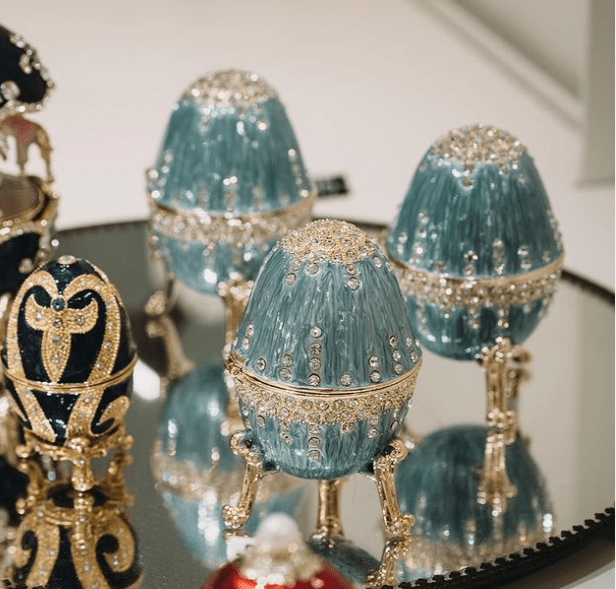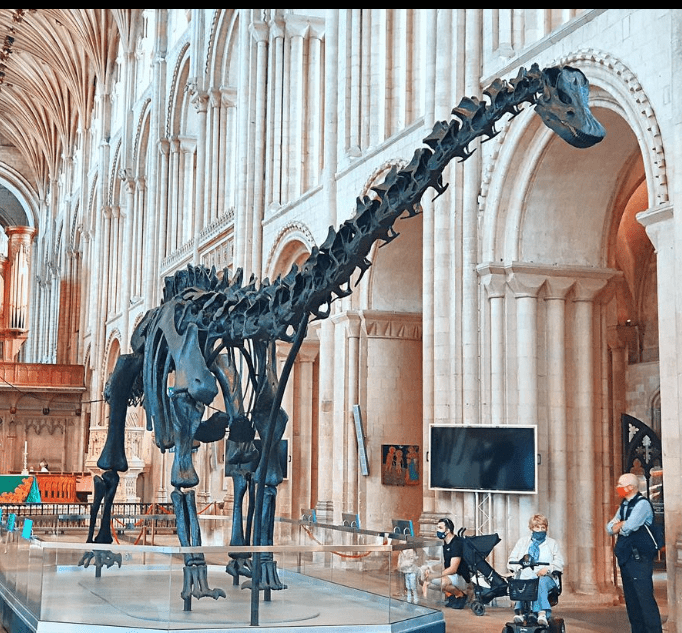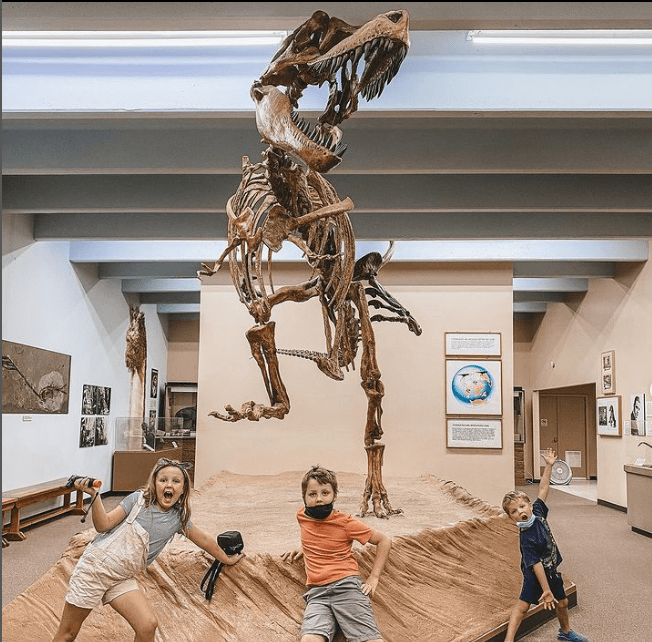Dippy The Dinosaur Facts: The Jurassic Coast Trust can’t wait for Dippy to arrive in Dorchester in February of next year. Before you head to Dorchester to see Dippy, make sure you know these 8 Amazing facts about him! Dippy is a gigantic skeleton, with a length of 21.3 meters and a width and height of almost 4 meters. Only centimeters separate him from the Victorian Gallery of the Dorset County Museum.
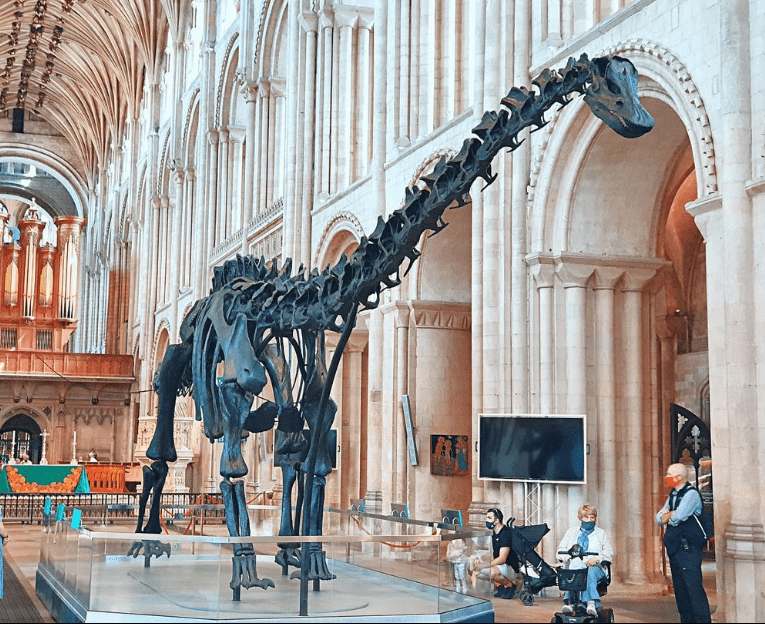
The assembly of Dippy’s 292 bones, all of which must be put together precisely, is a monumental task. One of Diplodocus Carnegie, a 150-million-year-old herbivorous dinosaur from the Jurassic era, is known as Dippy. At the time, the Jurassic Coast was submerged! If Diplodocus had spines on its tail and back, scientists believe they could have protected themselves against predators. Diplodocus, like modern elephants and humans, lived for 70 to 80 years. As far back as 1905, Dippy’s skeleton was on display at the Natural History Museum in London. The footprints of Dippy’s sauropod ancestors can be seen at Keates Quarry in Worth Matravers, on the Jurassic Coast. As a Go Jurassic! Ranger family, you’ll get free admission to the Dorset County Museum during Dippy on Tour, as well as these additional perks:
During Dippy on Tour, all visitors to Dorset County Museum are given a one-time free pass. Up to two adults and four children can use this deal. It’s estimated to be worth as much as £18. You can visit Dippy as often as you want. Visitors to Dorset County Museum during Dippy on Tour can use their Go Jurassic! Rangers IDs to gain free admission at any time throughout the museum’s operating hours. A look behind the scenes at Dippy’s production. The families of Go Jurassic! Rangers will get a first look at Dippy in early February 2018, before he goes on public display.
Natural History Museum Dippy arrived in 1905!
First dibs on coveted spots. The opportunity to reserve a spot in one of our two Dippy Sleepovers before they are made public. The most well-known dinosaur in the United Kingdom is on the move. Known for his prominent placement in the Natural History Museum’s grand entrance hall, Dippy the Diplodocus will be heading out on the open road for the first time. Many more people will be able to visit Dippy, which has a wide range of admirers of all ages.
Dorset County Museum will be the first stop for the 21-meter-long dino tourist. Despite the fact that Dippy appears to be a real Diplodocus skeleton, it is actually a plaster-of-Paris replica. As of 1905, it has been on display at the museum in its original location. The Natural History Museum’s Dippy exhibit will close on January 4th, 2017. After a year of preparation, Dippy will then start on his tour, which will take him to the following destinations:
- There is a museum in the county of Dorset.
- There is a museum in Birmingham, Alabama.
- The Museum of Ulster Kelvingrove Museum and Art Gallery
- At the Great North Museum of Scotland in Glasgow
- Newcastle is home to the Welsh National Assembly.
- Rochdale’s Number 1 Riverside,
- Norfolk County Courthouse
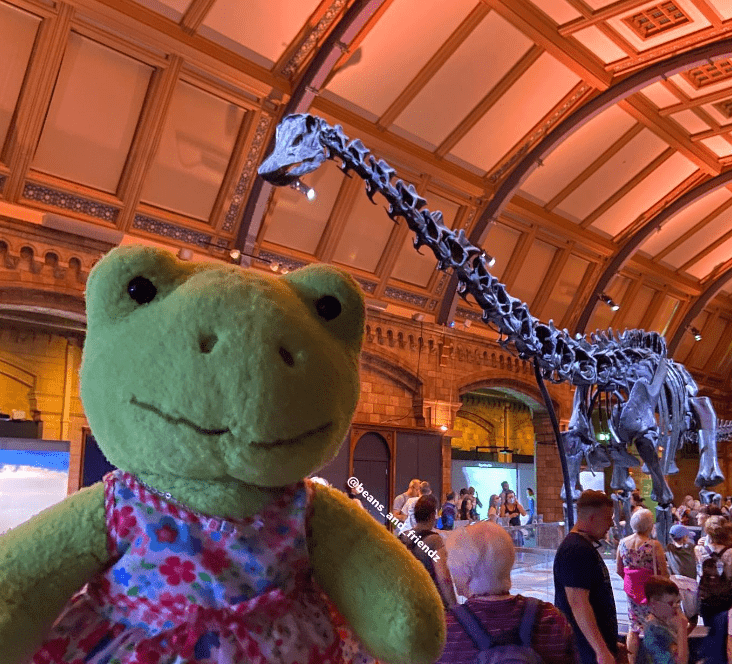
The blue whale skeleton that will take Dippy’s place in London’s Natural History Museum is the actual deal, unlike Dippy. Nearly 4.5 tonnes of bones drag down this massive whale, which is well over a century old. But Dippy’s days on exhibit at the Natural History Museum are not over. Re-cast in bronze and placed in the museum’s grounds, he’ll get the star treatment upon his return from his road trip. The legendary Dippy the Diplodocus from the Natural History Museum in London is now on tour. The dino will be disassembled and cleaned piece by piece beginning on January 5th, 2017, before making its way to museums around the United Kingdom. The museum’s main Hintze Hall will soon be home to a massive blue whale skeleton. See whether Dippy is coming to a museum near you by watching our movie!
What or who is Dippy, exactly?
The diplodocus skeleton, affectionately referred to as “Dippy,” may be found in the museum’s Central Hall (also known as the Hintze Hall). Dippy isn’t a real dinosaur skeleton, but only an expert could tell that. A diplodocus skeleton discovered in Wyoming in 1898 inspired the creation of this plaster of Paris figure. Since it stands to watch at the museum’s main gate, we’re sure Dippy has seen quite a bit during its existence.
Here are five fun facts about Dippy Dino in case you get homesick while he’s being disassembled and hauled away. When the Natural History Museum opened its doors in 1979, Dippy was already 109 years old. With 292 separate bones, Dippy took 36 shipping cases to get to London. Dippy is a plaster cast of a Diplodocus discovered in Wyoming, USA, in 1898, not an actual skeleton. Upon its discovery, tabloids dubbed it “the most gigantic mammal ever on Earth.” When it comes to dinosaurs, the Diplodocus species belongs to the sauropod family, which means “lizard feet.” Museums in cities including Paris, Berlin, Vienna, and Moscow all have replicas of Dippy’s head on display, as do ten other museums worldwide.
What will become of Dippy?
During the restoration process, Dippy will be removed from the display. The Dorset County Museum, located on the Jurassic Coast, will be the first step in a three-year tour of the UK for this exhibit, which will take around a year to complete (292 bones to polish and bubble wrap).
What will take Dippy’s place?
Since 1938, the museum’s 4.5-ton blue whale skeleton has been languishing in the shadows, waiting for its day in the sun. Mammals Hall’s Mammals Hall has a blue whale life-size model hanging from the ceiling, as well. The blue whale skeleton is real, unlike Dippy. In 1891, it washed up on the shores of Ireland’s Wexford Harbour, where the museum eventually purchased it. You can tell if you have visited the museum’s mammals hall recently that the whale is being moved.
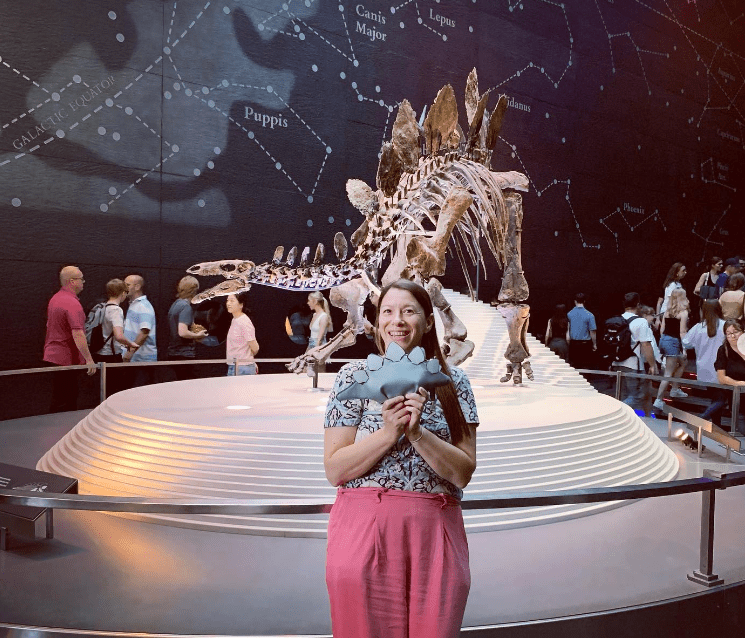
When will all of this occur: It’s possible to catch a glimpse of Dippy in the Natural History Museum’s Hintze Hall until January 5, 2017 (the museum will host a New Year’s Eve ball). The blue whale will not be on display in Hintze Hall until the summer of 2017. (swapping a dinosaur for a whale was never going to be a one-day job). In addition to the addition of 10 extra display bays, the hall will undergo a number of other renovations.
If you have any questions, please check back here for updates. That being said, the most pressing question is: What will the blue whale be called? Dippy was inspired by the public’s (and Carnegie’s) love of dinosaurs, whereas Bluey lacks the same ring to it. Even still, deep within the museum, the marketing team is counting its blessings that Dippy hasn’t been replaced by a sperm whale. There will be no snickering in the rear.
Despite everything, we’re still excited about dinosaurs! To this day, dinosaurs remain a vital part of our museum and our hearts. In addition to a replica of Dippy’s skull, we also have a gallery of dinosaur artwork created by children. At the Andrew Carnegie Birthplace Museum, we’re still excited about dinosaurs more than a century after Dippy’s story began. It’s only fitting that the world’s largest mammal greets visitors to the museum in grand style. There is a good chance that the ceiling will be reinforced. The museum will still be home to the world’s largest complete stegosaurus skeleton, an animatronic t-rex, and the dinosaur gift shop, which is a favorite among children.

